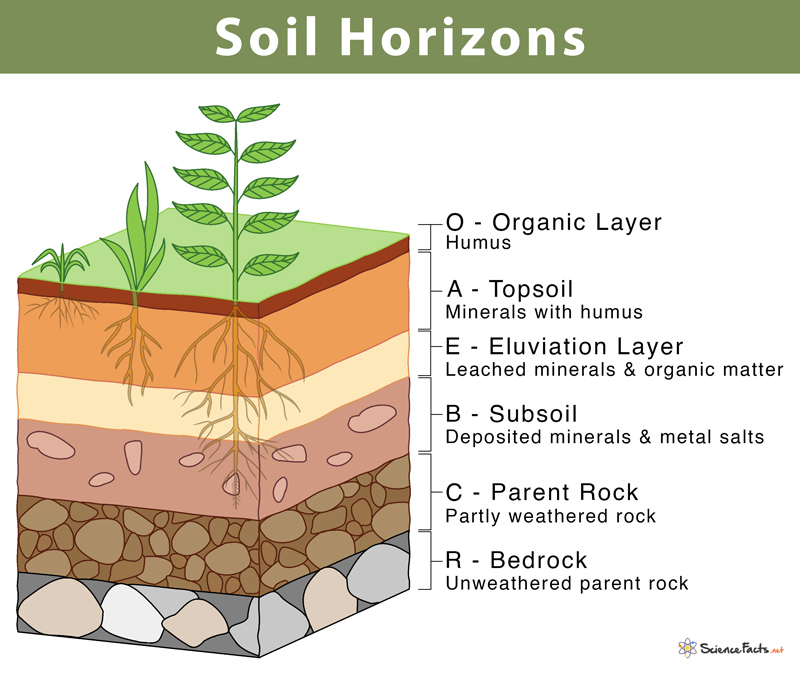Soil Profile
Key Notes :

1. Definition of Soil Profile:
- A soil profile is a vertical section of soil that shows all the different layers of the soil beneath the surface.
- It gives an idea of the composition and structure of the soil at various depths.
2. Layers of the Soil Profile:
The soil profile consists of several layers called horizons. The main horizons are:
- O Horizon (Organic Layer):
- Topmost layer, made up of decomposed leaves, plants, and animals (humus).
- It is rich in organic material and nutrients.
- It is dark in color.
- A Horizon (Topsoil):
- The topsoil layer is a mix of organic matter and minerals.
- It is the most fertile layer and supports plant growth.
- Contains roots of plants and organisms like earthworms and insects.
- B Horizon (Subsoil):
- Rich in minerals leached (washed down) from the upper layers.
- Has less organic material compared to the topsoil.
- It is denser and harder and contains clay, iron, and aluminum.
- C Horizon (Parent Material):
- Composed of weathered rock and minerals.
- Acts as a source of soil minerals.
- It is often very rocky and contains fragments of rocks that have broken down over time.
- R Horizon (Bedrock):
- The deepest layer made up of unweathered rock.
- It is not considered part of the soil but is the foundation from which the soil forms.
3. Importance of Soil Profile:
- Soil Fertility: The topsoil (A Horizon) is essential for growing plants because of its high nutrient content.
- Water Retention: Different layers of soil have varying abilities to retain water, affecting plant growth.
- Soil Formation: The soil profile helps understand how soil forms and changes over time due to weathering and erosion.
4. Factors Affecting Soil Profile:
- Climate: The type of climate (wet, dry, hot, or cold) influences the soil’s composition and depth of each layer.
- Parent Material: The type of rocks in the area affects the mineral content of the soil.
- Living Organisms: Plants, animals, and microorganisms help in the formation and breakdown of organic matter.
- Topography: The shape of the land can influence how water flows and how soil layers develop.
- Time: Soil profiles evolve over time, and changes in the environment can alter the layers.
5. Soil Erosion and Conservation:
- Over time, human activity and natural forces can lead to soil erosion, especially if the protective layers like the O and A horizons are lost.
- Conservation practices like planting cover crops and reducing deforestation help protect soil profiles.
Let’s practice!

